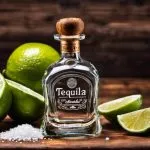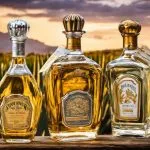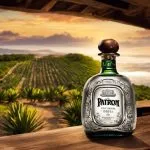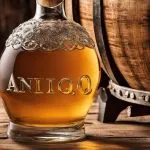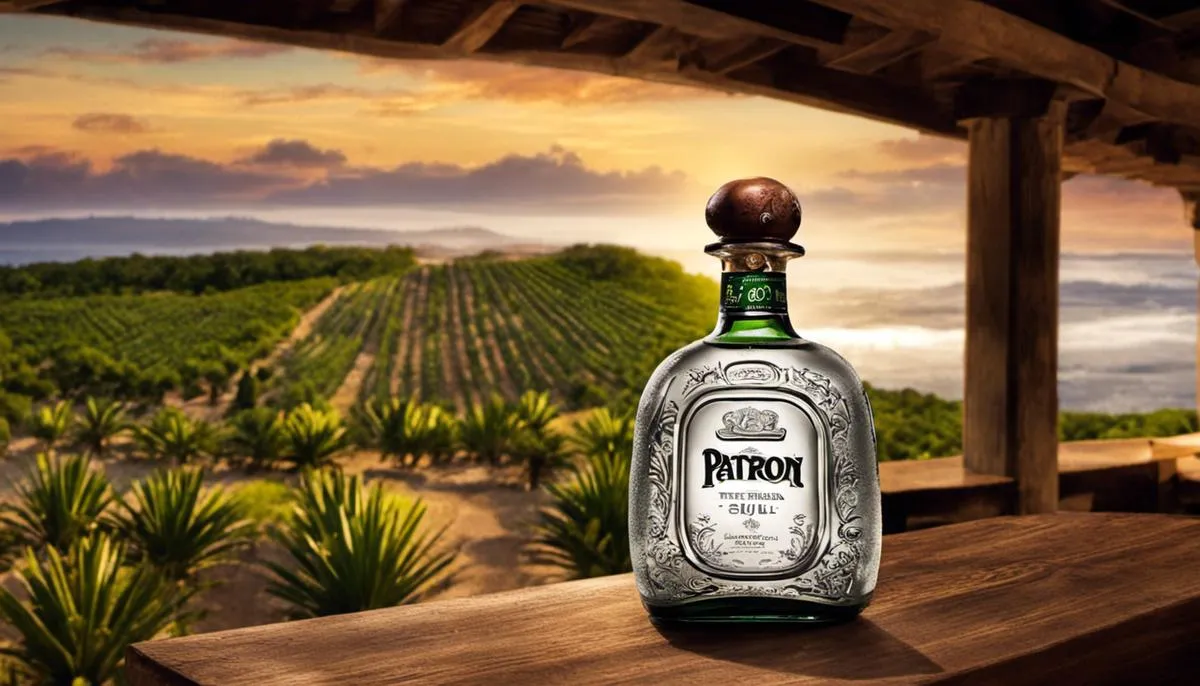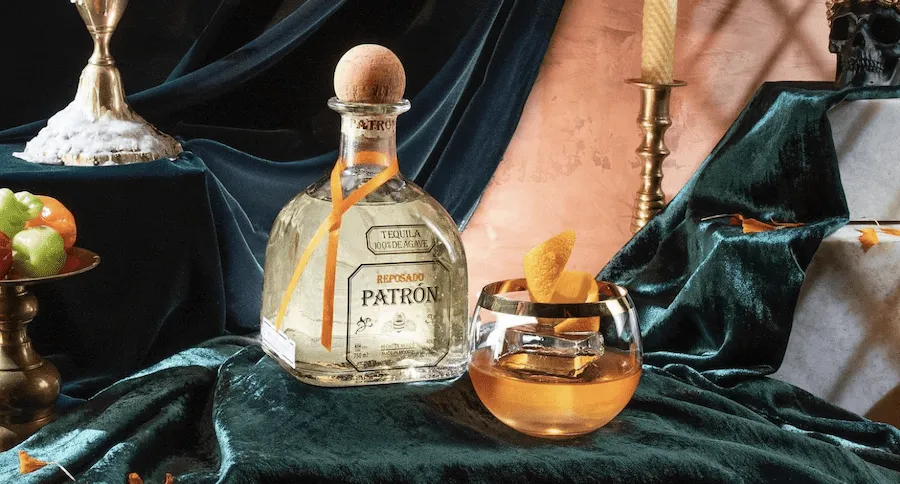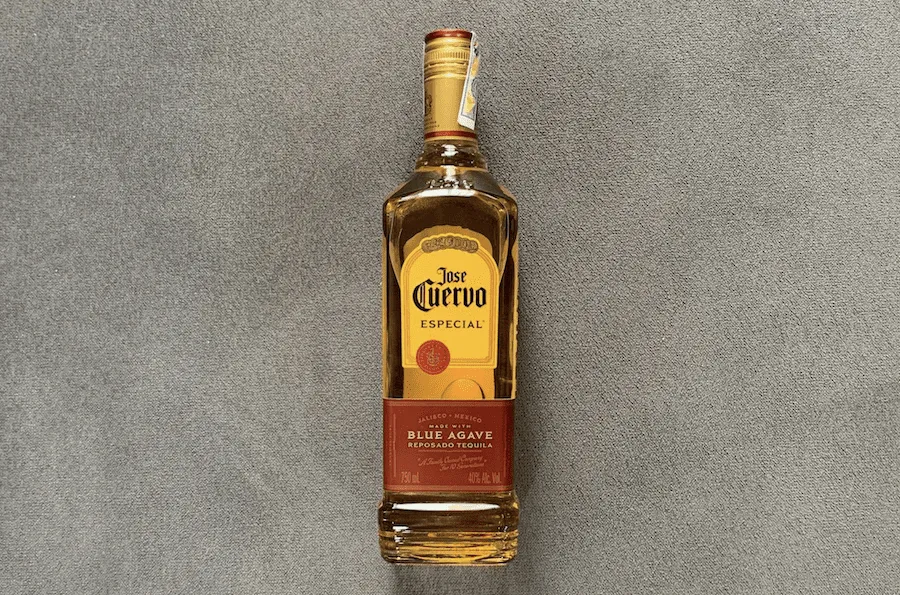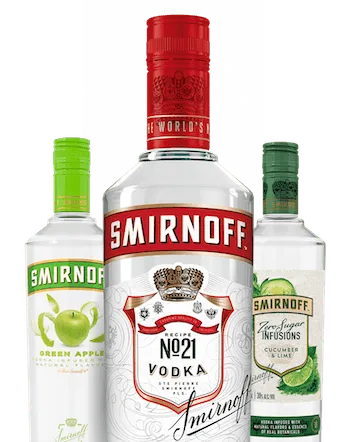Introduction
Gin has surged in popularity over the years, becoming a staple spirit for consumers around the globe. Renowned for its versatility and distinctive botanical flavours, gin is a fundamental component of many classic cocktails. With a rich historical tapestry that tells the story of its evolution from herbal medicines to the centrepiece of contemporary mixology, gin enjoys a celebrated status in the world of spirits. Each variation, from London Dry to New Western, presents enthusiasts with a unique tasting experience.
Price plays a crucial role in the selection of gin for both connoisseurs and casual drinkers. The diverse range of gin brands available today offers a spectrum of price points, catering to various budgets and preferences. The Top 20 Most Popular Gin Brands Prices Table is a valuable resource for those looking to explore these options, presenting a clear comparison of what the market has to offer. This guide aims to assist in selecting a gin that not only satisfies the palate but also aligns with the buyer’s economic considerations.
Key Takeaways
- Gin’s popularity is reflected in its historical significance and its role in modern cocktail culture.
- Prices of popular gin brands vary, providing choices for every budget.
- An understanding of gin categories and flavours aids in making an informed purchasing decision.
The Essence of Gin
Gin’s distinctive character originates from its juniper berries, which impart a piney, slightly sweet essence. As the cornerstone botanical, juniper is required to classify the spirit as gin. Beyond juniper, producers often incorporate a variety of botanicals such as citrus peels, spices, and local flora to create a unique profile.
I find that the diversity of botanicals allows for an expansive spectrum of flavours and aromas. The base of the spirit is usually a neutral spirit that has been distilled to ensure purity and neutrality in taste. This neutral foundation supports the infusion of flavours without competing with them, allowing the botanicals to take centre stage.
Here’s an example of how these elements come together:
- Base: Neutral Spirit
- Key Botanical: Juniper
- Common Botanicals: Citrus Peels, Coriander, Angelica Root
- Distinct Botanicals: Local Herbs, Cucumber, Rose Petals
The essence of gin is best appreciated when savoured neat or with minimal mixers, as this allows the intricate balance between the flavours and aroma of the botanicals to be fully experienced. My exploration through various gin brands has taught me that each gin presents a unique mosaic of taste, with some highlighting the freshness of citrus, while others emphasise the warmth of spices or the earthiness of local botanicals.
A Historical Perspective
In this section, I explore the origins and development of gin, detailing its evolution and enduring impact on culture and society.
Development of Distilled Spirits
The history of distilled spirits dates back to around the 8th century with the invention of the distillation process. This process was refined over centuries, leading to the creation of various spirituous liquors. By the 17th century, the Dutch spirit genever, often considered the predecessor to gin, had become widely known. Genever, distilled from malt wine and flavoured with juniper berries, laid the groundwork for what would become one of the most popular spirits in the world.
Gin’s Journey and Varieties
Traditional gin, as we know it today, began to take form when the spirit made its way to Britain. London Dry Gin, a style known for its crisp, juniper-led character, became the benchmark for quality. Conversely, Old Tom, a slightly sweeter version, was prevalent in the 18th century and is the namesake of the famous Tom Collins cocktail. In the United States, a variation known as American Gin or Western Gin, emerged from craft distilleries, often characterised by a more pronounced citrus profile, with the juniper note more subdued. Another potent variety is Navy Strength Gin, traditionally provided to the British Royal Navy at a higher proof because it would still allow gunpowder to ignite if it was accidentally drenched with the spirit.
Influence on Culture and Society
Gin has undoubtedly left an indelible mark on society and culture, with its influence echoing from the Gin Craze of the 18th century to the speakeasies of Prohibition America. The spirit’s affordability and the ease with which it could be produced made it exceedingly popular, culminating in a period known as the Gin Craze in London. This era shaped the drink’s reputation, prompting laws to control its production and consumption. Today, I note that craft distilleries have sparked a new gin renaissance, with a greater emphasis on unique botanicals, artisanal production methods, and premium branding.
Understanding Gin Categories
As we explore the gin market, it’s pivotal to understand how gins are categorised. These categories differentiate gins by flavour profiles, alcohol content, and regional production standards, providing a structured way to appreciate the spirit’s diversity.
Classification by Flavour
Gin can be broadly divided based on its flavour profile:
- London Dry: A renowned category where the prominent flavour must come from juniper berries. No artificial flavours or colours are added after distillation, and it typically has a crisp, dry taste.
- New American or Western Gin: Here, the sharp juniper taste is often subdued to allow citrus and other botanicals to emerge, thus favouring a more contemporary palate.
- Old Tom Gin: This style is slightly sweet and less dry than London Dry, embodying a historical recipe which often links Old Tom Gin to classic cocktails like the Tom Collins.
ABV and Proof Standards
The alcohol content in gin is denoted by ABV (Alcohol by Volume) and proof, which varies according to brand and region:
- ABV: By European Union standards, gin should have a minimum of 37.5% ABV. In the U.S., the minimum is set at 40% ABV.
- Proof: This is a measurement particularly used in the U.S. which is typically double the ABV.
Regional Definitions of Gin
Different regions have distinct definitions and standards for gin:
- European Union: Requires a minimum of 37.5% ABV for gin. Additionally, if a gin is labelled as “distilled gin,” it must be produced exclusively through re-distillation of alcohol with natural botanicals.
- United Kingdom: The home of the London Dry category, U.K. guidelines echo EU regulations but are particularly strict about the no-additives rule post-distillation for a gin to be termed as London Dry.
- Other Regions: Local laws may vary, and regions like the U.S. have their own set of standards which influence gin brands produced there, with a general lean towards more innovative and flavoured gin varieties.
In my assessment, recognising these categories helps in choosing a gin that aligns with one’s taste preferences and in understanding the distinctiveness each style offers.
Production Techniques
In crafting the finest gins, distillers employ meticulous production techniques that influence the spirit’s final character. Each stage of the process, from selecting the botanicals to the final proofing, is conducted with precision and adherence to tradition, though there’s room for innovation.
Distillation Methodologies
I find that the essence of gin’s unique flavour is derived primarily through its distillation process. Pot distillation and Coffey still are two traditional approaches. With pot distillation, botanicals like juniper, coriander, and angelica are often added to the liquor where their essence is infused directly. The Coffey still, on the other hand, typically used for continuous distillation, allows for a consistent and higher volume of gin production.
- Pot distilled gin: Typically involves steeping botanicals before distillation.
- Coffey still distillation: Offers precision and is used for larger-scale production.
Local and Exotic Botanicals
A critical step in my distillation process involves the selection of botanicals. Juniper is the quintessential gin botanical, but I combine it with an array of others such as coriander, orris, angelica, and liquorice. Each botanical imparts a distinct flavour, creating a complex and multi-layered taste profile. For instance:
| Botanical | Flavour Note | Common in Brands |
|---|---|---|
| Juniper | Piney and resinous | Most traditional gins |
| Coriander | Spicy citrus | Tanqueray |
| Orris | Floral and woody | Bombay Sapphire |
| Angelica | Earthy and herbal | Hendrick’s |
| Licorice | Sweet and earthy | Many contemporary gins |
Ageing and Proofing Practices
Finally, I incorporate ageing and proofing practices in my gin-making. While not all gins are aged, those that are, typically in oak barrels, gain depth and complexity. In proofing, I carefully dilute the distilled spirit to achieve the desired alcohol by volume (ABV). Most gins are bottled between 37.5% and 47% ABV, ensuring a balance between the botanical flavours and the strength of the liquor.
- Aging: Enhances complexity (Optional, not all gins are aged).
- Proofing: Adjusts alcohol content and flavour intensity.
By mastering these production techniques, I ensure the creation of a gin that’s not only reflective of its heritage but also stands out in its class.
Top 20 Most Popular Gin Brands Prices Table
When discussing popular gin brands, I find that pricing plays a significant role in shaping consumer preferences, especially between premium and more affordable selections. Below is a curated table that reflects some of the most sought-after gin brands, their distinct qualities, and their average price points.
| No. | Brand | Category | Average Price (£) |
|---|---|---|---|
| 1 | Tanqueray | Premium | 20-25 |
| 2 | Beefeater | Premium | 16-22 |
| 3 | Monkey 47 | Luxury | 40-50 |
| 4 | Plymouth | Premium | 25-30 |
| 5 | Bombay Sapphire | Premium | 18-24 |
| 6 | Sipsmith London Dry | Premium | 28-35 |
| 7 | The Botanist | Premium | 30-37 |
| 8 | Gordon’s | Affordable | 14-17 |
| 9 | Hendrick’s | Premium | 28-36 |
| 10 | Brockmans | Premium | 30-38 |
| 11 | Edinburgh Gin | Premium | 28-35 |
| 12 | Bathtub | Premium | 31-40 |
| 13 | Portobello Road | Premium | 25-32 |
| 14 | Opihr | Premium | 23-29 |
| 15 | Caorunn | Premium | 22-30 |
| 16 | Hayman’s | Affordable | 20-25 |
| 17 | Williams | Premium | 30-36 |
| 18 | No.3 | Premium | 30-40 |
| 19 | King of Soho | Premium | 33-39 |
| 20 | Thomas Dakin | Premium | 29-34 |
Monkey 47, a luxury brand, remains distinctive with its pricing strategy, reflecting its niche position in the market. Meanwhile, Tanqueray and Beefeater epitomize accessible premium options that have long been favourites among gin enthusiasts for their balanced quality and affordability. With this diversity in pricing and category, my list aims to cater to a wide range of preferences and pricing expectations. Each brand on this list is a testament to the diverse world of gin, where both history and innovation infuse each bottle with character.
Navigating Gin Flavours and Aromas
When exploring the world of gin, I am immediately struck by the complexity of flavours and aromas presented by different brands. Each gin tells its own story through its unique profile.
Flavour Profiles and Tasting Notes
I find that the flavour profiles in gin range from classic juniper-heavy notes to innovative infusions of florals and spices. A gin like Tanqueray London Dry, which is known for its balance of four botanicals including juniper, coriander, angelica, and liquorice, offers a traditional taste that is both crisp and complex. To discern these distinct flavours, I typically look for the following characteristics in a gin’s flavour profile:
- Juniper: The backbone of most gins, providing piney and resinous characteristics.
- Citrus: Often coming from lemon or orange peel, these notes add a refreshing zest.
- Botanicals: Elements like coriander, cassia, or cardamom can introduce a spicy or aromatic quality.
- Florals: Some gins incorporate floral touches like rose or lavender for a delicate fragrance and taste.
Enhancing Cocktails and Culinary Pairings
As for cocktails, gins like Beefeater or Aviation Gin bridge the gap between different ingredients, enhancing the drinking experience. For instance, my experience with the classic gin and tonic is augmented by the presence of a gin with pronounced citrus notes, which complement the tonic’s quinine bitterness. In a Negroni or Martini, the gin’s botanicals balance the sweetness of vermouth and the bitterness of Campari or olives. Here are my go-to cocktail pairings with different styles of gin:
- Gin and Tonic: Citrus-forward gins to elevate the zesty profile.
- Martini: A juniper-centric gin for a robust yet smooth experience.
- Negroni: Gins with a bold botanical blend for a nuanced finish.
- Gimlet: Bright and aromatic gins to harmonise with the lime cordial.
For culinary pairings, I recommend trying a variety of gins with different flavour profiles to find the perfect match for light appetisers or seafood dishes.
The Art of Garnishing
Garnishing is not merely an ornamental practice; it’s a vital step in elevating both the aroma and flavour of a gin-based drink. I pay close attention to garnishes, as they can significantly impact a gin’s palette. A slice of cucumber or sprig of rosemary can enhance the botanical qualities of a gin, whereas a twist of lemon or lime peel can emphasize the citrus notes. My garnish choices often include:
- Citrus Twists: For a zesty fragrance that complements citrusy gins.
- Herbs: Like rosemary or basil, to accentuate earthy gin notes.
- Berries: This can add a fruity and slightly sweet contrast.
Each garnish serves to amplify the already intricate flavours and scents of gin, crafting an engaging sensory experience with every sip.
The Craft of Cocktails
In the realm of mixology, gin stands out as a versatile spirit that’s paramount in the creation of numerous classic cocktails while also being a mainstay in modern cocktail crafting. My exploration here delves deep into the essentials every home bartender must possess to elevate their cocktail game, from time-honoured recipes to contemporary mixology trends.
Classic Gin Cocktail Recipes
Martini:
- Ingredients: 60 ml Gin, 15 ml Dry Vermouth
- Method: Stir over ice, strain into a chilled glass, garnish with an olive or lemon twist.
Negroni:
- Ingredients: 30 ml Gin, 30 ml Campari, 30 ml Sweet Vermouth
- Method: Stir into glass over ice, garnish with orange peel.
Gin and Tonic:
- Ingredients: 50 ml Gin, Tonic Water
- Method: Fill glass with ice, add gin, top with tonic, and garnish with lime wedge.
Experimentation with these foundational gin cocktails allows a deeper appreciation of the spirit’s potential.
Modern Mixology Trends
I’ve witnessed a resurgence of craft gin in contemporary cocktails, where unconventional botanicals and unique profiles shape the modern palate. Experimentation is key, with bartenders utilising distinct gins, like the citrus-forward Western Gin or the sweeter Old Tom, to twist traditional recipes.
Gimlet with a Twist:
- Ingredients: 50 ml Craft Gin, Fresh Lime Juice, Simple Syrup
- Method: Shake with ice, fine strain into a chilled cocktail glass, garnish with a slice of cucumber or a sprig of fresh basil.
Home Bartender Essentials
To become adept at creating gin cocktails at home, I advise investing in quality gin and the foundational tools for a home bar. A versatile lineup of gins, from dry to botanical-rich profiles, broadens the spectrum for mixology, ensuring a readiness to craft anything from a simple gin martini to complex recipes requiring precision and creativity.
Home Bar Checklist:
- Gins: A selection including London Dry, New Western, Old Tom
- Tools: Shaker, mixing glass, bar spoon, jigger, strainer
- Glassware: Martini glasses, highball glasses, old-fashioned glasses
- Garnishes: Citrus peels, olives, cocktail onions, fresh herbs
Remember, the craft of cocktails is an art form where precision meets creativity; my role is to guide and inspire your mixology journey.
Consumer Insights
In this section, I will examine the current trends and preferences of gin consumers, analyse how the narrative surrounding a brand influences their choices, and discuss the relationship between the price and perceived quality of gin brands.
Buying Preferences and Trends
Consumer behaviour within the gin market has shown a significant shift toward premium and craft gins, where the uniqueness of flavour and brand experience often take precedence over price. Market trends indicate that an increasing number of consumers are seeking out New American or Western Gins, which offer fresh and citrus-dominant notes compared to the juniper-forward profiles of traditional gins. These buying preferences are perpetuated by the growing brand loyalty among millennials and Gen Z consumers, who favour affordable yet premium-quality gins for their sophisticated cocktails.
The Impact of Brand Story on Selection
The narrative and heritage of a gin brand play a pivotal role in consumer selection. Brands with a storied past, like Beefeater 24, often evoke a sense of tradition and authenticity. I’ve noticed that this aspect is particularly compelling for consumers who value a brand’s history and the meticulousness of their distillation process. The brand story has the power to solidify consumer loyalty and influence market trends, with well-established brands maintaining a strong following even as new players emerge.
Price Point Versus Quality
Consumers are increasingly discerning when it comes to balancing the price point against the quality of gin. While luxury brands represent the pinnacle of quality for some, there is a marked trend toward recognising value in less expensive options without compromising on the taste experience. The perception that higher-priced gins equate to better quality is being challenged, as some affordable brands have gained prestige and popularity by offering a high-quality product that belies its price tag.
In summary, the gin market is characterised by a progressive tilt toward unique, accessible premium products, with brand narratives significantly influencing consumer choices and an evolving perspective on the price-quality relationship.
The Role of Sustainability and Ethics
In the world of gin production, sustainability and ethics have become paramount. I’ve observed that a craft distillery often leads the way in implementing eco-friendly practices. This commitment to the planet can be seen through the use of local botanicals, which not only reduces transportation emissions but also supports local ecosystems and economies.
Sustainability in Gin Making:
- Local Botanicals: Utilising native flora minimises carbon footprint.
- Craft Distilleries: They’re frequently at the forefront of green innovation in the industry.
- Environmental Impact: Striving for reduced waste and energy use during production.
Ethical sourcing is another aspect I must highlight. It’s about ensuring that the ingredients I procure are obtained in a way that’s fair to the growers and producers. Transparency in sourcing and fair trade can make a significant difference in the lives of the communities involved.
The fusion of sustainability and the art of crafting gin enhances the value of the final product for both the consumer and the planet. Here’s a quick look at what some consider during production:
| Aspect | Importance |
|---|---|
| Sustainable Practices | Fundamental for ecological balance |
| Ethical Sourcing | Ensures fairness and community support |
| Local Botanicals | Embraces local culture and reduces emissions |
By fostering sustainable methods and ethical sourcing, the gin industry not only demonstrates care for the environment and people but also often creates a richer, more discerning product. As a fervent advocate of these principles, my pledge is to continually seek out and support distilleries that prioritise the planet and its inhabitants.
Global Gin Destinations
Gin enthusiasts will find that exploring the world of gin is as much about the places as it is about the spirit itself. I’ll take you through some iconic destinations where the gin is as splendid as the stories behind its creation.
Iconic Distilleries to Visit
At the top of my list of must-visit distilleries is the Tanqueray facility in Scotland. With their meticulous distillation process, a visit here provides an insightful look into how their signature juniper-flavoured spirit is crafted. Venture further into the United Kingdom and you might find yourself at Sipsmith in London. It’s not just the range of gins that impresses, but the originality and historical significance of the location, offering a connection to traditional gin-making methods.
Gin Tourism
Gin tourism merges the love for travel and the appreciation of gin. It’s a journey through local cultures and their connections to this botanical spirit. Partake in a gin tasting while overlooking the London skyline, or blend your very own gin in a workshop. For those travelling through Europe, the multitude of gin destinations is vast; local attractions often include historical sites and stunning natural landscapes that contribute to the memorable experiences that surround the gin-tasting adventures.
When you’re in Australian gin destinations like Four Pillars in Yarra Valley, you can witness a perfect marriage between innovative gin production and enchanting vineyard views. Gin has indeed inspired a global movement, making destinations out of distilleries and inviting connoisseurs and curious travellers alike to discover its nuanced world.
Lifestyle Integration
Gin has certainly found its place within my lifestyle, particularly through its role in the culinary scene and the enormity of its social aspect. Here’s a deeper look at how it integrates into both spheres.
Gin in the Culinary World
In my experience with the culinary scene, gin’s distinctive flavours lend themselves well to food pairings. The botanicals in gin, such as juniper, coriander, and citrus peels, pair marvellously with a variety of foods. I’ve found that a classic London Dry gin can complement the delicate flavours of seafood, while a more floral or herbaceous gin might balance out the richness of gamey meats. When I’m entertaining, a gin-based cocktail can kick off the dining experience with an elegant touch. For example, a simple G&T can be elevated with the addition of herbs and spices that mirror the dish’s flavour profile.
| Food Pairings | Gin Type | Cocktail Suggestion |
|---|---|---|
| Seafood | London Dry | Classic Gin & Tonic with a squeeze of lime |
| Game | Herbal Gin | A Gin Martini with a fresh rosemary sprig |
The Social Aspect of Gin Drinking
Social drinking is an integral part of many people’s lives, including mine, and gin plays a key role here. It’s the foundation of many classic cocktails that are often enjoyed during social gatherings or at cocktail bars. Whether it’s a lively gin and tonic or a sophisticated martini, gin has become synonymous with socialising. The hospitality industry has noted this trend as well, leading to an increased presence of specialised gin bars offering curated gin selections. These establishments provide an inviting atmosphere where friends and colleagues can gather and enjoy the subtleties of various gin expressions.
- Gin and Tonic Socials: A casual way of socialising, often accompanied by light snacks or canapés.
- Cocktail Hours and Gin: More structured social events may feature a range of gin cocktails that encourage guests to mingle and enjoy the diversity of gin profiles.
Through both the culinary and social lenses, gin has seamlessly woven itself into the fabric of lifestyle and entertainment, becoming a versatile player in my own approach to fine dining and convivial gatherings.
Advancements in Gin Technology
In the realm of gin production, technological advancements have significantly improved both the distillation process and the development of complex flavour profiles.
Innovation in Distillation Equipment
I’ve observed that distillation technology has undergone substantial changes with the integration of technologically advanced equipment. Rotary evaporators, for example, allow for more precise temperature control, which is crucial for capturing the delicate essences of botanicals without degrading them. This equipment has enhanced the efficiency and consistency of gin production, ensuring a high-quality product every time.
Additionally, there’s an increasing use of computer-aided distillation systems. These systems offer distillers the ability to fine-tune the distillation process, monitor real-time data, and make adjustments on the fly to achieve the desired purity and concentration of alcohol. This level of control ensures that each batch of gin meets strict standards and flavour profiles.
Tech in Flavour Development
When it comes to flavour innovation, advanced sensory technology plays a pivotal role. This technology involves the use of electronic noses and tongues—devices that can detect and analyse the complex array of flavours and aromas in gin. This helps in maintaining a consistent flavour profile and assists in the creation of new and exciting products.
Moreover, the use of data analytics has found its place in flavour development. By analysing consumer preferences and market trends, distillers can tailor their recipes to better meet the expectations of gin enthusiasts. Additionally, the emergence of AI-driven flavour prediction models aids in predicting how different botanical combinations might work together before physical testing, saving time and resources during the product development phase.
The Future of Gin
In looking ahead, I see the gin market expanding with innovation and the emergence of new trends, while forecasts suggest a dynamic evolution of the product.
Emerging Trends in the Gin Market
My observation of the current gin industry points to a significant rise in craft and artisanal brands. Consumers are increasingly seeking unique flavour profiles, which are being answered by small-batch distilleries experimenting with local botanicals and unconventional ingredients. For instance, there’s a growing trend for gins that incorporate native plants and herbs to give a truly distinct taste that reflects their place of origin. Moreover, there’s an appreciation for gins with provenance and story, underlining the importance of branding in the emerging gin markets.
Additionally, there’s a notable shift towards sustainable and eco-friendly production methods. Distilleries are investing in organic farming for their botanicals and implementing energy-efficient processes. These efforts are resonating with a consumer base that is becoming increasingly environmentally conscious.
Forecasting Gin’s Evolution
Looking to the future, the gin market exhibits potential for substantial growth, particularly in emerging markets such as Southeast Asia and Latin America, where a growing middle class is poised to embrace this spirit. I anticipate continued diversification of gin with regional takes on the classic gin formula, catering to the local palates.
Furthermore, advancements in distillation technology will likely contribute to the evolution of gin. There will be a push towards more sophisticated production methods that can enhance the purity and flavour profiles of gin. Innovation in this space may also lead to the creation of entirely new categories of gin, much as we have seen with pink gins and barrel-aged variants in recent years.
My forecast is supported by current market analyses which suggest that gin will remain a popular choice for consumers and one that will continue to inspire creativity among distillers worldwide.
Frequently Asked Questions
What are the best gins to use for a classic gin and tonic?
For a classic gin and tonic, I suggest opting for gins that have a balanced profile of juniper and botanicals. Brands like Tanqueray and Bombay Sapphire are renowned for their consistently refreshing taste that pairs splendidly with tonic water.
Which gin brands are considered high-end?
High-end gin brands typically offer a unique blend of botanicals and a smooth finish. Sipsmith and Monkey 47 are considered premium, delivering complex flavours that are appreciated by connoisseurs.
Can you recommend some affordable gins that don’t sacrifice quality?
Certainly, there are several gins that are affordable without compromising on quality. Beefeater and Gordon’s offer delightful flavours and are suitable for a range of cocktails without breaking the bank.
What are the characteristics of a gin that make it ideal for a Martini?
An ideal gin for a Martini should possess a strong juniper presence and a high level of clarity. It should be dry, as traditional Martinis are best served with minimal sweetness. I find that brands like Beefeater 24 and Tanqueray No. Ten have the requisite crispness and botanical complexity for an exquisite Martini.
Could you list some 100-proof gin brands?
100-proof gins offer a more robust flavour and a higher alcohol content, providing a spirited kick to cocktails. Navy-strength gins such as Plymouth and Hayman’s Royal Dock are excellent 100-proof options.
What are the leading gin brands currently trending in the market?
The gin market is always evolving with new trends. Aviation Gin has been well-received thanks to its marketing and celebrity association, while artisanal brands like Hendrick’s continue to gain popularity for their unique infusions and characterful flavours.

